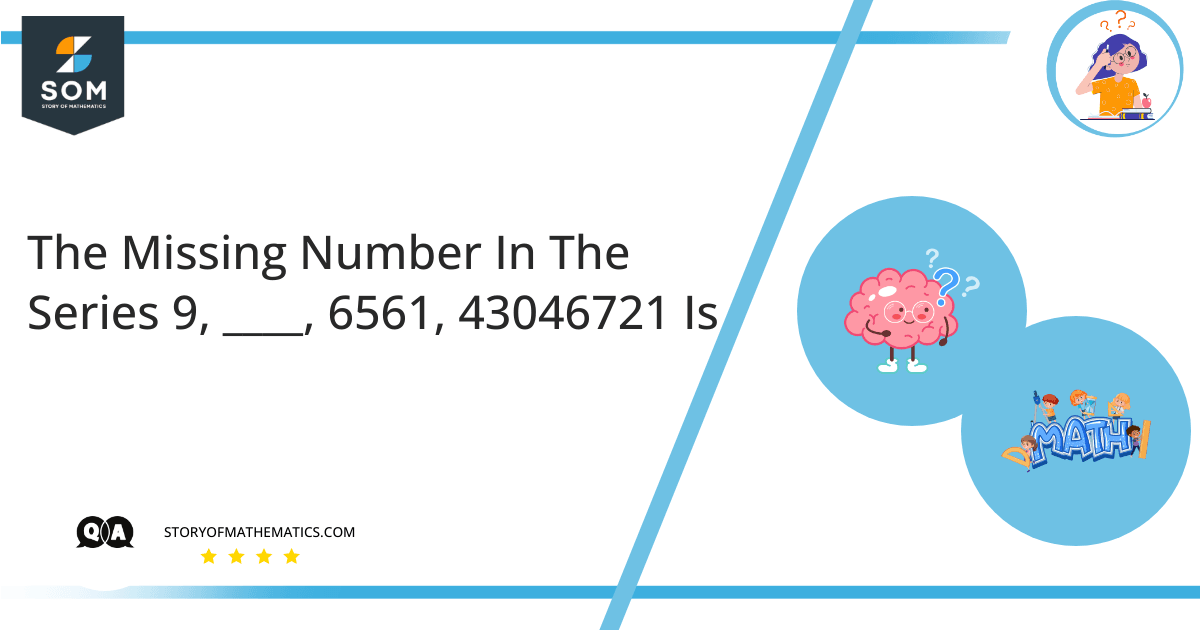
This problem aims to familiarize us with missing numbers in different sets of series. The concept required to solve the given problem is basic calculus involving sequences and series.
Sequence and series are the basic topics of arithmetic’s. We define a sequence as an enumerated group of numbers or elements in which recurrences of any sort are permitted, whereas a series is the sum of all numbers or elements
Whereas the numbers that are skipped in the given series of a number with identical differences among them are known as missing numbers in the series. The technique of finding the missing numbers is defined as figuring out the similar changes between those numbers and loading the missing number in the distinctive series and places.
Expert Answer
Here, we are given a geometric sequence, in which every element is acquired by multiplying or dividing a definite numeral with the initial number. The steps to find the missing number are:
-Choose $2$ or $3$ numbers to which the rule will be used to uncover the missing number. Let’s say you have $5$ numbers in a series, choose the first $3$ elements to match the rule that is to be used.
–While selecting the number to match the rule, pick the number that is effortless to work with. These contain numbers that are factors of $2,3,5$ or $10$. You can also review the series with some familiar forms such as squares, cubes, etc.
The given series is:
\[9,\space ?,\space 6561,\space 43046721\]
We have to determine the number $?$ in the series.
So by looking at the series, we can infer that the $3rd$ and the $4th$ numbers have some connection and if we find this connection, we can acquire the relation of the whole series and thus find the missing number. So finding the relation between $6561$ and $43046721$.
If we multiply the $3rd$ number by itself it produces the $4th$ number:
\[6561\times 6561=43046721\]
So by this, we can say that each number in the series is the square of the previous number.
\[a_{n}=(a_{n-1})^2\]
So to find $2nd$ number, inserting $n=2$:
\[a_{2}=(a_{2-1})^2 \]
\[a_{2} =(a_{1})^2 \]
\[a_{2} = (9)^2 \]
That is:
\[a_{2} = 81\]
For confirmation let’s now produce the 3rd number $a_3$ using the $2nd$ number $a_2$ and see if the relation for the series is correct.
\[a_{3} = (a_{3-1})^2\]
\[a_{3} = (a_{2})^2\]
\[a_{3} = (81)^2\]
\[a_{3} = 6561\]
So the missing term is confirmed to be $81$.
Numerical Result
The missing number in the series $9, \space ? \space, \space 6561, \space 43046721$ is $81$.
Complete series is:
$9, \space 81, \space 6561, \space 43046721$
Example
Find the Missing Number in series $2, \space 8, \space ?, 134217728$.
By looking at the series we can conclude that the relation of the series can be found if we find out the relation between $2$ and $8$.
The relationship is:
\[a_{n} = (a_{n-1})^3\]
So to find $3rd$ number, inserting $n=3$:
\[a_{3} = (a_{3-1})^3\]
\[a_{3} = (a_{2})^3\]
\[a_{3} = (8)^3\]
That is:
\[a_{3} = 512\]
